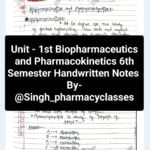GUJARAT TECHNOLOGICAL UNIVERSITY
BRANCH NAME: B. Arch.
SUBJECT NAME: Architecture Design Studio – I
SUBJECT CODE: 2X15001
1st Year: Semester: I
Prerequisite:
It is a beginner course. There is no prerequisite for this course.
Rationale:
Architecture Design: introduction to design parameters, anthropometrics, human activity and the use of space.
Teaching and Assessment Scheme:
Teaching Scheme Credits Examination Marks Total University
Field Lectures Studio C External exam Internal exam Marks Exam
work (ESE)Theory (ESE) (PA)Theory (PA)Viva Type
Viva
2 2 4 08 NA 40 NA 60 100 JURY
Content:
Sr. No. Content Total Hours* % Weightage*
1 Understanding of basic shelter and its types 44 35%
2 Study of anthropometry and its co-relevance with spaces 44 35%
Design Exercise of a simple architectural form based on an
understanding of anthropometry
3 Related Study Program-I (understanding of built 40 30%
environment by participating directly)
– Understanding human activity and use of space
– Explore relationship between architecture, its
surrounding context, people and culture
– Understanding of various facets of built
environment
– Document and record information regarding
architecture and culture, methods of observation,
recording, documenting and representing
*: indicative
Reference Books:
Architecture: Form, Space, and Order by Francis D. K Ching, Willey
V. S. Pramar, Design fundamentals in Architecture, Somaiya Publications Pvt. Ltd., New Delhi, 1973
Architecture: A Visual History, Jonathan Glancey, DK, Penguin Random House, 2017
Human Dimension and Interior Space, A Source Book of Design Reference Standards By Julius Panero, Martin
Zelnik, 2014
Architects’ Data, Ernst Neufert, 1970
Page 1 of 2
w.e.f. AY 2018-19
Course Outcome:
Sr. No. CO Statement Marks
% Weightage
Upon completion of this course, the students should be able to:
1 Analyze spaces with respect to anthropometry 20%
2 Select appropriate design principles, shelter type and scale of spaces, relevant 10%
ones for given set of requirement
3 Evaluate the character/quality of design of various shelter styles, use of space 10%
with respect to human activity
4 Identify key visual elements during RSP 10%
5 Propose a small architecture input 50%
List of Projects/Assignments*:
Lectures, Studios, Field trips, Study tour, documentation, recording, presentation, group discussion
A small architecture intervention of any sort can be given for exercise of skills/knowledge gained during this semester.
*- this is suggestive for common purpose. Faculty may decide on this, considering student group and institution
philosophy.
Page 2 of 2
w.e.f. AY 2018-19
GUJARAT TECHNOLOGICAL UNIVERSITY
BRANCH NAME: B. Arch.
SUBJECT NAME: Technical Representation of Drawing (TRD) – I
SUBJECT CODE: 2X15002
1st Year: Semester: I
Prerequisite:
It is a beginner course. There is no prerequisite for this course.
Rationale:
To develop an understanding of technical drawing as a tool for communication
Teaching and Assessment Scheme:
Teaching Scheme Credits Examination Marks Total University
Field Lectures Studio C External exam Internal exam Marks Exam Type
work (ESE)Theory (ESE) (PA)Theory (PA)Viva
Viva
1 1 4 06 40 NA 60 NA 100 DRAWING
EXAM
Content:
Sr. No. Content Total Hours* % Weightage*
1 Introduction & Use of Drawing Instruments 24 25%
Line Exercise
Lettering
2 Orthographic Projections: Points, Lines, Planes, Solids 48 50%
Orthographic Projections: Inclined Objects
3 Auxiliary Projections 24 25%
*: indicative
Reference Books:
Engineering Drawing – N. D. Bhatt
Essentials of Drafting – B. James
Rendering with pen and ink – Gill Robert
Architectural Graphics – Frank Ching, latest edition
List of Projects/Assignments*:
Drafting Exercises, Model making, Presentations
*- this is suggestive for common purpose.
Page 1 of 1
w.e.f. AY 2018-19
GUJARAT TECHNOLOGICAL UNIVERSITY
BRANCH NAME: B. Arch.
SUBJECT NAME: Building Construction – I
SUBJECT CODE: 2X15003
1st Year: Semester: I
Prerequisite:
It is a beginner course. There is no prerequisite for this course.
Rationale:
Understanding of basic building elements, building materials and different construction processes
Teaching and Assessment Scheme:
Teaching Scheme Credits Examination Marks Total University
Field Lectures Studio C External exam Internal exam Marks Exam Type
work (ESE)Theory (ESE) (PA)Theory (PA)Viva
Viva
1 2 3 06 40 NA 60 NA 100 DRAWING
EXAM
Content:
Sr. No. Content Total Hours* % Weightage*
1 Unit I: Introduction Structural and non structural building 24 25%
elements and terminologies
Building Elements – a. functions and Design
b. Important Building Components
c. Foundation, Plinth and Superstructure
d. Typical wall section
Understanding of basic construction drawing
2 Unit II: Building Material 24 25%
Study of basic building materials like mud, brick, stone, timber
and bamboo
3 Unit III: Building Construction 48 50%
Stone Masonry – a. Construction Techniques with examples
b. Case studies of buildings, landmark
structures
Brick Masonry – a. Techniques with examples
b. Types of Brick masonry
c. Case studies
Mud Construction – a. Techniques with examples
b. Types of mud Construction
c. Case studies
*: indicative
Page 1 of 2
w.e.f. AY 2018-19
Reference Books:
Construction of Building Vol.-I- R. Berry
Building Construction Metric Vol.-II- W. B. Mckay
Construction Technology Vol.-I- Chudley
Building Construction Illustrated- Francis D. K. Ching
Engineering Materials – S.C. Rangwala (course book)
Building Materials – B.C. Punamia (Additional Reference)
Time Savers Standards – Building Materials and Systems – Donald Watson (Advanced Reference)
List of Projects/Assignments*:
Lectures, Drafting exercises and case studies, sketches & model making, Site visit, Practical
*- this is suggestive for common purpose.
Page 2 of 2
w.e.f. AY 2018-19
GUJARAT TECHNOLOGICAL UNIVERSITY
BRANCH NAME: B. Arch.
SUBJECT NAME: Basics of Design
SUBJECT CODE: 2X15004
1st Year: Semester: I
Prerequisite:
It is a beginner course. There is no prerequisite for this course.
Rationale:
This course is aimed to introduce basic principles of Design to students. This will introduce students to visual elements
and basic principles of designing i.e. symmetry, balance, rhythm, focus, contrast, repetition, variety, scale, proportion etc.
Thereby, sensitize students to be more observant to their surroundings and promote it as a basic creative instinct in the
students.
Teaching and Assessment Scheme:
Teaching Scheme Credits Examination Marks Total University
Field Lectures Studio C External exam Internal exam Marks Exam
work (ESE)Theory (ESE) (PA)Theory (PA)Viva Type
Viva
NA 2 4 06 NA 40 NA 60 100 JURY
Content:
Sr. No. Content Total Hours* % Weightage*
1 Visual elements: point and line, shape and mass etc 24 25%
2 Principles of design: unity and variety, balance, emphasis 24 25%
and focal point, proportion etc
3 Exploring colour scheme and its application on architectural 48 50%
forms and spaces
Nature Study
Study of textures and light
Study of linear and Planar forms using simple material like
Mount Board, metal foil, box boards, wires, string,
thermocol etc.
Study of Solids and voids to evolve sculptural forms and
spaces and explore the play of light and shade and
application of color
Study of fluid and plastic forms using materials like clay,
pop etc.
*: indicative
Suggested Specification table with Marks (Theory):
Distribution of Theory Marks
R Level U Level A Level N Level E Level C Level
05 20 20 10 10 35
Legends: R: Remembrance; U: Understanding; A: Application; N: Analyze; E: Evaluate; C: create and above levels
(Revised Bloom’s Taxonomy)
Page 1 of 2
w.e.f. AY 2018-19
Note: This specification table shall be treated as a general guideline for students and teachers. The actual distribution of
marks in the question paper may vary slightly from above table.
Reference Books:
Architecture: Form, Space, and Order by Francis D. K Ching, Willey
V. S. Pramar, Design fundamentals in Architecture, Somaiya Publications Pvt. Ltd., New Delhi, 1973
Webb, Frank, “The Artist guide to Composition, “David & Charles, U.K., 1994
Drawing a Creative Process”, Ching Francis, Van Nostrand Reinhold, New York, 1990
Architecture: A Visual History, Jonathan Glancey, DK, Penguin Random House, 2017
Course Outcome:
Sr. No. CO Statement Marks
% Weightage
Upon completion of this course, the students should be able to:
1 Analyze various design styles with respect to design principles applied and 20%
visual elements used.
2 Select from various visual elements and design principles, relevant ones for 10%
given set of requirement
3 Evaluate the character/quality of design with respect to design principles like 10%
unity and variety, balance, emphasis and focal point, proportion, scale etc
4 Identify key visual elements features taught in this course 10%
5 Propose different designs using various basic design principles 50%
List of Projects/Assignments*:
Lectures/Class work shall consist of presentations on various fundamentals of design as listed above. This subject is best
delivered by various exercises, Model making etc.
*- this is suggestive for common purpose. Faculty may decide on this, considering student group and institution
philosophy.
Page 2 of 2
w.e.f. AY 2018-19
GUJARAT TECHNOLOGICAL UNIVERSITY
BRANCH NAME: B.Arch.
SUBJECT CODE: 2X15005
SUBJECT NAME: HUMANITIES-I
st
1st Year, 1 SEMESTER
Type of course: B.Arch. Humanities
Prerequisite: NA
Rationale:
The genesis and forces of evolution. The individual and the universal
“Self” – Their unity and diversities.
Values of Self and the world around. “I” –The total, the part, the observer, the interpreter, the
participant and the designer.
Formation of values & cultures.
Teaching and Examination Scheme:
Teaching Scheme Credits Examination Marks Total
Theory Marks Practical Marks Marks
L T P C ESE (E) PA (M) ESE (V) PA (I)
2 0 0 2 50 50 0 0 100
Content:
Sr. Teaching Weightage
Topics
No. Hrs. %
1 Emergence of universe: 9 25
The formless and its formation in to the physical form of Duals
and Plurals. The overlaps of Physics and Metaphysics in
appreciation of “The Mind-Matter” synonyms.
2 Tool making 12 50
A natural human evolutionary process, tools for extension of man
to reach universal scales: Tools for Mental efficiency extensions,
Work efficiency extensions and Management efficiency
extensions (Mantra- Yantra- Tantra )
3 Eco-systems and Eco-cultures: 9 25
Context and formation of value Judgments at Global, Regional
and Local scales. Formation of cultures and civilizations as a
process of “Feel & Thoughts”.
Suggested Specification table with Marks (Theory):
Distribution of Theory Marks
R Level U Level A Level N Level E Level C Level
05 15 30 25 05 20
Legends: R: Remembrance; U: Understanding; A: Application, N: Analyze and E: Evaluate
Page 1 of 3
w.e.f. AY 2018-19
C: Create and above Levels (Revised Bloom’s Taxonomy)
Note: This specification table shall be treated as a general guideline for students and teachers. The
actual distribution of marks in the question paper may vary slightly from above table.
Reference Books:
1. Text Books: The Ascent of Man: Jacob Bronwski.
2. The Making of Man: David Leakey
3. Atma Bodh – Chinmaya Mission
4. Prana Upanishad – Chinmaya Mission
5. Aittariya Upanishad – Chinmaya Mission
6. Vedanta and Modern Physics – Ram Krishna Mission
7. The Turning Point: Kapra Fritjot
8. The Tao of Physics: Kapra Fritjot
9. Space, Time & Architecture – Seigfrid Gideon
Course Outcome:
Sr.No CO Statement Marks %Weightage
Upon completion of this course, the students should be able to:
1 Understand: The chronology of evolution of human culture, 25
social behavior, intellect etc.
2 Evaluate: How social organization, culture, and personal 35
behavior of humans got translated into Architectural wonders.
3 Explain: Development of art, architecture, language and human 20
consciousness.
4 Propose: How overall evolution of human and its impact on 20
Architecture
Term Work:
Preparation of notes/report based on the discussions, tutorials, readings.
List of Tutorials: Few reference video tutorials for common reference.
1. New evolution in human origins
2. The Big Bang Theory
3. History of Earth
4. Continental Drift
5. World war and Industrialization
Page 2 of 3
w.e.f. AY 2018-19
Page 3 of 3
w.e.f. AY 2018-19
GUJARAT TECHNOLOGICAL UNIVERSITY
BRANCH NAME: B. Arch.
SUBJECT NAME: Architecture Communication Skills-I
SUBJECT CODE: 2X15006
1st Year, Semester: I
Prerequisite:
It is a beginner course. There is no prerequisite for this course.
Rationale:
Introduction to Architectural Vocabulary, Communication and Verbal presentation skills
Teaching and Assessment Scheme:
Teaching Scheme Credits Examination Marks Total University
Field Lectures Studio C External exam Internal exam Marks Exam
work (ESE)Theory (ESE) (PA)Theory (PA)Viva Type
Viva
NA 2 0 02 50 NA 50 NA 100 EXAM
Content:
Sr. No. Content Total Hours* % Weightage*
1 General English Grammar: Direct and reported speech, 08 25%
active and passive voice, Tenses and propositions, Condition
sentences
2 Architectural Vocabulary 18 60%
Architectural presentation skills (verbal)
3 Body Language and speaking skills 06 15%
*: indicative
Suggested Specification table with Marks (Theory):
Distribution of Theory Marks
R Level U Level A Level N Level E Level C Level
25 25 25 10 05 10
Legends: R: Remembrance; U: Understanding; A: Application; N: Analyze; E: Evaluate; C: create and above levels
(Revised Bloom’s Taxonomy)
Note: This specification table shall be treated as a general guideline for students and teachers. The actual distribution of
marks in the question paper may vary slightly from above table.
Reference Books:
Jain A. K., Professional Communication Skills: S. Chand publishing
Lesikar R V, Flatley M E ,Rentz K and Pandey, Business Communication: Making Connections in a Digital
World 2009: New Delhi, Tata Mcgrow Hill
Kumar S and Lata P, Communication Skills 2011: New Delhi Oxford University Press
Leech, Geoffrey and Jan Svartvik. A Communicative Grammar of English. New Delhi: Pearson, 2009.
Introduction to Communication skills, Mahajan Publishing House
Communication Skills, Parul Popat
Communication Skills, Pearson publishers
Page 1 of 2
w.e.f. AY 2018-19
Course Outcome:
After learning the course the students should be able to:
1. Understand the factors affecting quality of communication, improve general language skills
2. Build Architectural vocabulary (in English language)
3. Enhance phonetic competence, comprehension skills, presentation skills, group discussion skills etc
4. Enhance architectural (professional) presentation skills
List of Projects/Assignments*:
Lectures, Group discussions, Films, presentations etc
*- this is suggestive for common purpose.
Page 2 of 2
w.e.f. AY 2018-19










